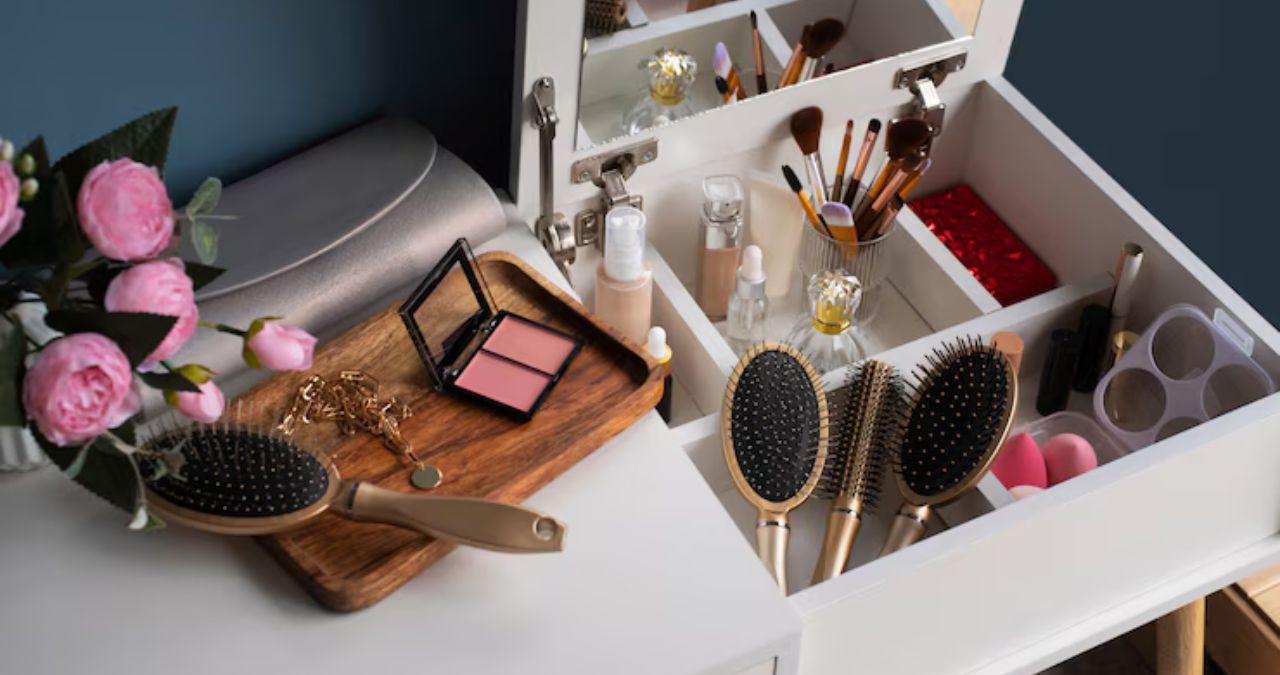HOME
Proven Activities to Get Kids Off Their Phones and Into Life

In today’s digital age, it’s a common sight to see kids with their faces glued to their phones, scrolling and tapping away. This constant engagement with screens can be frustrating for parents who want their children to experience real-life activities. However, instead of fighting technology, we can embrace it and introduce fun alternatives. This article explores effective ways to get kids off their phones and into real-life activities, backed by proven facts and authoritative sources.
The Problems of Phone Addiction in Kids Lack of Exercise
One of the significant issues with excessive phone use is the lack of physical activity. According to the World Health Organization (WHO), children aged 5-17 should engage in at least 60 minutes of moderate to vigorous physical activity daily. However, a study published in the journal Lancet Child & Adolescent Health revealed that only one in five adolescents globally meets this guideline. This decline in physical activity has been linked to various health problems, including childhood obesity, behavioral issues, and poor sleep quality.
Physical inactivity is a major contributor to obesity, which can lead to severe health conditions such as diabetes, hypertension, and heart disease, even at a young age. The Centers for Disease Control and Prevention (CDC) reports that childhood obesity rates have tripled since the 1970s, and nearly 20% of children and adolescents in the United States are obese.
Sleep Deprivation
The blue light emitted from screens disrupts the natural sleep-wake cycle by interfering with the production of melatonin, the hormone responsible for regulating sleep. The Sleep Foundation highlights that children who use screens before bed are more likely to experience difficulties falling asleep and achieving deep, restorative sleep. This can lead to chronic sleep deprivation, which negatively impacts mood, cognitive performance, and overall health.
A study published in JAMA Pediatrics found that each hour of screen time was associated with a significant reduction in sleep duration. Experts recommend avoiding screens for at least 1-2 hours before bed to ensure better sleep quality and overall well-being.
FOMO and Social Comparison
Social media platforms create an environment of constant social comparison and fear of missing out (FOMO), which can be particularly damaging to self-esteem and mental health in kids and teens. A study by the Royal Society for Public Health in the UK found that social media use is linked to increased levels of anxiety, depression, and poor self-image among young people.
Young users often see their peers posting curated, often idealized glimpses into their lives, which can seem more exciting or glamorous than their own. This can foster feelings of inadequacy, loneliness, and anxiety, significantly impacting their mental health. The American Psychological Association (APA) has noted that these issues are becoming increasingly prevalent among adolescents.
Cyberbullying and Online Predators
Parents must also be vigilant about the risks of cyberbullying, online harassment, and internet predators targeting kids and teens. According to a report by the Cyberbullying Research Center, about 37% of young people between the ages of 12 and 17 have been bullied online. The National Center for Missing and Exploited Children reports that online exploitation is a growing concern, with many predators using social media platforms to target vulnerable youth.
It’s crucial for parents to monitor phone and internet usage, set clear rules around appropriate online behavior, and have open conversations about responsible technology use and online safety. These measures can help protect children from these dangers and foster a healthier relationship with technology.
Proven Activities to Get Kids Off Their Phones Plan a Scavenger Hunt
A scavenger hunt is an excellent way to get kids moving and thinking creatively. This activity involves a series of clues that require movement, problem-solving, and teamwork. According to the Child Mind Institute, engaging in such activities can improve cognitive flexibility and executive functioning in children.
You can tailor the scavenger hunt to your children’s ages and interests, incorporating educational elements like math problems or historical facts. This not only gets kids exploring the outdoors but also engages their minds and encourages cooperative play.
Go on a Bike Ride
Bike rides offer a fun and healthy way for families to spend time together. The National Heart, Lung, and Blood Institute (NHLBI) states that regular physical activity, such as biking, can improve cardiovascular health, strengthen muscles, and enhance mental well-being.
Choose a scenic trail or bike path and enjoy the fresh air and exercise. Long bike rides provide kids with a good cardio workout and an opportunity to discover nature. Make the ride more interactive by playing games like “I Spy” or setting challenges, such as finding the most interesting rocks, leaves, or bugs along the way. This not only keeps them engaged but also helps them appreciate the environment.
Play Tag or Freeze Tag
Classic outdoor games like tag and freeze tag are simple yet effective ways to get kids moving. These games require running, jumping, and twisting, providing excellent physical exercise while being fun. The CDC highlights that such unstructured play can help develop physical coordination, balance, and social skills.
Gather a few kids from the neighborhood and head to a park or open space for an afternoon of play. You can add variety by playing different versions like “hot potato” or “duck, duck, goose.” These games help children build physical strength and enhance their ability to cooperate and communicate with peers.
Visit a Local Playground
Playgrounds are perfect for encouraging physical activity and social interaction. Look for playgrounds with a variety of equipment, such as climbing structures, slides, and swings. The American Academy of Pediatrics (AAP) emphasizes the importance of play for children’s development, noting that it helps develop physical strength, coordination, and balance.
Playing on a playground also provides opportunities for imaginative play and socializing with peers. Plan to spend at least an hour at the playground to ensure kids get a good workout and plenty of playtime.
Learn a New Sport
Introducing kids to a new sport can be a great way to get them active and engaged. Sports like soccer, tennis, swimming, or martial arts or even family hikes offer physical exercise and opportunities for social interaction. A study published in the journal Pediatrics found that children who participate in sports are more likely to have better physical health and social skills.
Enroll your child in beginner classes to help them find a sport they enjoy. Learning proper techniques and rules challenges kids both mentally and physically. Team sports, in particular, help build social skills like communication, teamwork, and leadership.
Outdoor Activities: Bubble Painting Bubble Painting
Bubble painting is a fun and creative activity that engages kids of all ages. To get started, you’ll need washable tempera or acrylic paint, dish soap, water, containers for mixing paint and bubbles, bubble wands or straws, and paper for the bubbles to land on. Mix a few squirts of paint with dish soap and water in your containers. Use a ratio of about 1 part paint to 1 part dish soap to 2 parts water for the best bubbles. Swirl a bubble wand or straw in the mixture to gather up lots of soapy bubbles, then wave the wand to release the bubbles onto the paper. As the bubbles pop, they’ll leave behind colorful spots, creating interesting patterns.
Outdoor Bubble Painting
On a nice day, take the bubble painting activity outside. The breeze will catch the bubbles and swirl them into fun shapes and lines. Just be sure to weigh down your paper with rocks or boards so it doesn’t blow away. Kids will have a blast chasing and popping bubbles while creating colorful masterpieces. This activity sparks creativity by introducing an element of chance, as you never know exactly what patterns and shapes the bubbles will make.
Indoor Activities: Inflatable Obstacle Courses Set Up an Obstacle Course
Nothing beats the excitement of bouncing around an inflatable obstacle course. Clear some space in your basement, garage, or backyard and set up inflatables like bounce houses, slides, or obstacle course sets. If you don’t own any inflatables, consider renting larger ones to create an epic course. A study by the American Council on Exercise found that children who engage in activities involving bouncing and jumping on inflatables improve their balance, coordination, and cardiovascular health.
Arrange a series of challenges using items like tunnels to crawl through, walls to climb over, balance beams to walk across, hoops or shapes to hop on and off, and slides to zoom down.
Make it Fun and Engaging
Highlight the thrill and adventure of navigating an inflatable obstacle course. Emphasize the physical activities involved, such as jumping, climbing, and sliding. Use positive reinforcement by offering small rewards for completing different sections of the course, such as stickers, extra playtime, or a favorite treat. Provide plenty of praise and encouragement to motivate children to participate enthusiastically.
Social and Family Activities Arrange Playdates
Arrange playdates with friends or siblings to make the activity more social. Kids are more likely to join in and have fun when they see their peers enjoying the obstacle course. Make it a family activity by joining them on the course, showing that physical play is enjoyable for everyone. A report by the National Institute for Play highlights that family playtime can strengthen family bonds and improve children’s social skills.
Create a Story or Challenge
Turn the obstacle course into an imaginative play scenario. Create a story where they have to navigate the course to rescue a stuffed animal or find hidden treasure. Using their imagination makes the activity more engaging. Organize friendly competitions with timed challenges and set up a leaderboard. Let children try to beat their own times or compete against each other in a fun and supportive way.
Health Benefits
Explain the importance of staying active for their health. Physical activities done inside the inflatable obstacle course strengthen muscles, improve mood, and help children grow strong and healthy. Emphasize the health and fitness benefits of the activity, such as improving cardiovascular health, building muscle strength, and enhancing coordination and balance. The Mayo Clinic supports these findings, noting that regular physical activity can significantly enhance children’s physical and mental health.
More Fun Activities for Phone-Glued Kids Learn a New Skill
Help your child discover a new passion or hobby by enrolling them in classes to learn skills that don’t involve screens. Skills like swimming, dancing, cooking, or playing a musical instrument activate the brain’s reward centers and boost confidence. As your child improves at their new skill, they’ll gain a sense of mastery and purpose, which helps offset the dopamine hits they get from phones and video games. Research published in the journal Frontiers in Psychology shows that engaging in new skills can enhance cognitive function and emotional well-being in children.
Varied and New Experiences
Introduce varied activities to keep kids engaged. Creative play, sports, and skill learning offer alternatives to screen time and promote overall well-being. Encourage them to explore different interests and hobbies, from arts and crafts to outdoor adventures. The key is to keep the activities diverse and exciting, so they don’t feel the need to return to their screens. The American Academy of Pediatrics recommends a balanced approach to activities, ensuring that children have a mix of physical, creative, and social engagements.
It is Your Responsibility to Let Kids Be Active
Getting kids active and engaged in real life is crucial for their health and development. With fun, creative activities, you can help them discover new interests and talents. Technology has its place, but real-world interactions are vital for happy, well-adjusted children. Encourage your kids to put down their phones and explore the amazing possibilities life offers. With patience and creativity, you can transform screen time into quality time and create lasting memories.
By following these guidelines and incorporating these activities, you can help your children break free from their screens and enjoy a healthier, more balanced lifestyle. Whether it’s through outdoor adventures, creative projects, or new skills, there’s a world of opportunities waiting to be explored. So go ahead—give boredom the boot, and let the good times roll!
HOME
Vanity Desk: Guide to Function, Design, and Popular Styles

Vanity desks have long been an essential piece of furniture for those who value functionality and style in their personal spaces. Whether you’re getting ready in the morning or winding down at night, a vanity desk provides a dedicated area for grooming, self-care, and organization. But a vanity desk is more than just practical; it’s a statement piece that reflects your personality and adds a touch of elegance to your space.
This guide will walk you through everything you need to know about vanity desks, from their essential functions to their most popular designs and styles. By the time you’re done reading, you’ll be ready to choose the perfect vanity desk to fit your needs and aesthetic.
What Is a Vanity Desk?
A vanity desk is a furniture piece designed primarily for grooming and makeup application. It typically includes a table or desk surface, storage compartments for cosmetics and tools, and, most often, a matching mirror. While traditional versions of vanity desks leaned heavily on ornate designs, modern options cater to a wide spectrum of tastes, ranging from minimalist to vintage-inspired.
Vanity desks are not limited to beauty products. These versatile pieces can double as writing desks, workstations, or even decorative focal points in a room, depending on their design and functionality.
Why Do You Need a Vanity Desk?
A vanity desk offers more than just a practical solution for makeup and grooming routines. Here’s why you might want to invest in one:
- Dedicated Space: A vanity desk gives you a personal area where you can organize your beauty products or accessories, helping to reduce clutter.
- Enhanced Self-Care: Starting and ending your day at a thoughtfully arranged vanity can turn your routine into a relaxing ritual.
- Aesthetic Appeal: Vanity desks add a sense of luxury and elegance to any bedroom, dressing room, or bathroom.
- Multi-Functional Use: Many vanity desks can be repurposed as decor elements, small workstations, or even a console table.
Choosing the Right Vanity Desk for Your Needs
When choosing a vanity desk, it’s important to consider how you plan to use it, the space available, and your personal style. Here are some key factors to think about:
1. Consider Functionality
Before purchasing a vanity desk, determine how you’ll use it. Ask yourself:
- Will it hold all your cosmetics and grooming tools?
- Do you require multiple drawers for extra storage?
- Should it include a built-in mirror, or will a separate mirror work better?
If you have an extensive collection of beauty products, look for a vanity with ample storage space, such as drawers, compartments, or shelves. If you’re someone who prioritizes simplicity, a minimalist design with a clean surface may suit your needs.
2. Measure Your Space
Vanity desks come in various shapes and sizes. Make sure you measure the available space in your room before purchasing. Compact vanities are ideal for smaller bedrooms or apartments, while larger vanities with additional features work well for spacious dressing rooms.
Tip: Don’t forget to account for legroom and space for an accompanying chair or stool.
3. Pick a Style That Matches Your Room
From traditional and rustic to modern and Scandinavian, the design of your vanity desk should complement the decor of your room. Here are some popular styles to consider:
- Traditional: Features ornate details, curved legs, and antique-style finishes. Perfect for classic or vintage-themed spaces.
- Modern Minimalist: Characterized by clean lines, neutral colors, and sleek surfaces. Great for contemporary interiors.
- Rustic: Includes wooden finishes, distressed textures, and earthy tones. Ideal for farmhouse-inspired spaces.
- Hollywood Glam: Often includes built-in LED lighting around the mirror and high-gloss finishes, bringing luxury to your vanity space.
Popular Vanity Desk Styles to Consider
1. The Classic Vanity Desk
Classic vanity desks typically feature a three-part mirror and multiple drawers. These work well in traditional or vintage-styled rooms, offering timeless elegance and functionality. Look for designs with detailed embellishments such as carved wood or brass handles.
2. The Compact and Minimalist Vanity
Minimalist vanities are perfect for modern homes and small spaces. These vanities often feature a sleek design with one or two drawers, focusing on efficiency without overwhelming the room. Pair with a simple, padded stool for a polished look.
3. Floating Vanity Desk
A floating vanity desk is mounted on the wall, freeing up floor space and making your room appear larger. This style is ideal for apartments or spaces where square footage is limited. Floating designs can be paired with wall mirrors or decorative backdrops for added dimension.
4. Multi-Functional Vanity Desk
Want to make the most of your furniture? Multi-functional vanities are great options. They double as writing desks or compact workstations. Simply close the mirror or fold it away, and you’ve got an instant workspace.
5. Mid-Century Modern Vanity Desk
With its clean lines and retro vibe, a mid-century modern vanity desk adds a touch of sophistication. These typically feature tapered legs, wooden finishes, and understated drawer pulls, making them versatile for a range of decor themes.
6. Hollywood Vanity Desk
For those who dream of a touch of glam, Hollywood vanity desks are hard to beat. These striking designs often come with built-in LED mirror lights, creating a luxurious aesthetic while providing superior lighting for makeup application.
Tips for Styling Your Vanity Desk
Once you’ve chosen your ideal vanity desk, styling it is the next step. Here are some quick tips to help you elevate your setup:
- Lighting Matters: Place your vanity near a natural light source or invest in quality lighting, such as a mirror with built-in LEDs.
- Add Greenery: A small potted plant can add a fresh touch to your vanity desk.
- Stay Organized: Use trays, storage jars, and acrylic organizers to keep cosmetics, brushes, and jewelry neatly arranged.
- Accessorize Thoughtfully: Incorporate a decorative mirror, framed photo, or a scented candle for a personal touch.
- Choose the Right Chair: A comfy chair or chic stool can make all the difference. Consider upholstered pieces for added luxury.
Create Your Perfect Vanity Space Today
A vanity desk is more than just a piece of furniture; it’s a centerpiece for self-expression and functionality in your home. From helping you stay organized to adding elegance to your decor, the benefits of investing in the right vanity desk are endless.
Whether you’re drawn to a timeless vintage design, a space-saving floating desk, or an ultra-modern style, there’s something out there for everyone. Take the time to assess your needs, space, and tastes to find the vanity desk that suits you perfectly.
Need help styling your vanity area? Leave a comment or reach out to us for tips and recommendations—we’d love to help!
HOME
Fauxmoi: Exploring the Intersection of Social Media & Pop Culture

Pop culture and social media have always been connected, shaping how we consume entertainment, discuss trends, and engage with celebrity news. Platforms like Instagram, TikTok, and Twitter allow real-time conversations and make cultural moments accessible to global audiences. However, the need for safe, curated, and less toxic spaces for these discussions has grown. Enter Fauxmoi, a rising star in the digital landscape where pop culture meets community-driven insights.
This blog explores the rise of Fauxmoi, its unique position in the social media landscape, and how it has become a defining space for pop culture enthusiasts across the globe.
The Rise of Fauxmoi
Fauxmoi didn’t emerge from traditional social media giants. While Instagram and TikTok have the mass appeal, Fauxmoi carved its niche on platforms such as Reddit. Initially a small, discreet space for discussing celebrity gossip and pop culture insights, Fauxmoi (a clever play on words poking fun at the infamous celebrity gossip account, Deuxmoi) grew due to its authenticity, intimate community, and refreshing take on cultural commentary.
What Makes Fauxmoi Different?
Unlike other spaces dominated by commercial agendas or aggressive algorithms, Fauxmoi thrives on user-generated content. Discussions are led by the community, and there’s a notable absence of the clickbait and paparazzi culture that often cloud traditional celebrity reporting. This authenticity draws people in, providing a nuanced and inclusive way to dissect entertainment trends without the toxicity found in many social media spaces.
Fauxmoi also offers a new type of celebrity coverage. Instead of glossy, PR-driven narratives, it leans into the offbeat and overlooked moments. This grassroots approach makes it relatable and candid, all while fueling discussions that extend far beyond tabloid-style speculation.
Breaking Down the Appeal
Fauxmoi succeeds because it connects with its target audience in specific and meaningful ways. Here’s why it stands out in a crowded digital ecosystem:
1. Curated Communities
One of Fauxmoi’s biggest strengths lies in its ability to foster small, tight-knit communities. Unlike Instagram comment sections or Twitter threads that can quickly devolve into chaos, Fauxmoi discussions are guided and moderated, creating a safer and more civil environment for pop culture discourse.
The sense of belonging that Fauxmoi provides is palpable. Users feel like part of a knowledgeable, dedicated community, united through mutual appreciation of the latest trends, celebrity moments, and obscure internet finds.
2. Refreshing Honesty
Tired of scripted TikTok dances and overpolished Instagram feeds? Fauxmoi users value authenticity. Whether it’s candid celebrity anecdotes or raw commentary on pop culture moments, the platform celebrates honesty over hype. For example, you’re more likely to encounter discussions about how a public relations blunder could impact a movie’s box office than to see a reposted tabloid headline.
This level of transparency resonates with an audience seeking deeper and less performative interactions in an era of digital posturing.
3. A New Type of Influencer Culture
Fauxmoi flips influencer culture on its head. Instead of deifying celebrities or influencers, it humanizes them. Discussions often explore the real-life consequences of fame, the complexities of public expectations, and the toll celebrity can take on mental health.
This balanced approach not only encourages empathy but also brings nuance to the table. Pop culture enthusiasts find themselves engaging in dialogues that are less about judgment and more about understanding.
4. Pop Culture Through a Political Lens
Pop culture is more political than many realize, and Fauxmoi uniquely bridges the gap between entertainment and social justice. Discussions often touch on cultural appropriation, gender politics, labor in the film and music industries, and other critical topics, sparking thoughtful conversations about the intersection of art and society.
By promoting consciousness and accountability, Fauxmoi shows that entertainment exists within a broader cultural framework, inspiring users to dig deeper than just the surface appeal of celebrities and trends.
Fauxmoi’s Impact on Pop Culture Consumption
Fauxmoi is doing more than just creating pop culture commentary. It’s changing how people interact with entertainment altogether.
1. Shifting the Influence Paradigm
Platforms like Fauxmoi are proof that influence doesn’t have to trickle down from corporate giants. Instead, influence can grow horizontally, driven by organic conversations within communities. This democratization of cultural conversations ensures that diverse perspectives are included, creating a richer, more textured understanding of what defines today’s pop culture.
2. Challenging Media Narratives
The traditional media landscape often portrays celebrities and pop culture with a rose-tinted lens, shaped by PR teams rather than reality. Fauxmoi challenges these narratives by looking closer and digging deeper, encouraging users to think critically rather than merely consuming.
It provides an alternative to passive information consumption, pushing audiences to actively engage with the content while scrutinizing its implications.
3. Reimagining Fan Culture
Fan communities have long suffered from stereotypes, often portrayed as overly zealous, ignorant, or toxic. Fauxmoi shifts that narrative, portraying fandoms as intellectual spaces where art, culture, and societal trends intersect.
This reimagining gives fans a platform to showcase their creativity, insights, and understanding of broader cultural contexts. It also allows them to reclaim their space from the negativity commonly associated with internet culture.
What Does Fauxmoi Teach Us About Social Media?
Fauxmoi’s growing popularity highlights a critical takeaway for social media as a whole. Users are becoming increasingly selective about the digital spaces they inhabit. The future of online platforms lies in smaller, more curated environments, where authenticity and meaningful engagement take precedence over follower counts and ad-driven algorithms.
Fauxmoi also reminds us that pop culture isn’t just entertainment. It’s a mirror reflecting societal trends, anxieties, and aspirations. Platforms willing to acknowledge and explore these layers will stay relevant long after fleeting trends have passed.
Final Thoughts: Fauxmoi as the Future of Digital Pop Culture Communities
Fauxmoi is more than just a social media microcosm; it’s a movement. It redefines how platforms can create safe, engaging, and intellectually stimulating spaces for entertainment and cultural discussion. By prioritizing the user experience over commercial agendas, Fauxmoi is setting a bold example of what online communities can and should look like.
Want to join the movement? Start by participating in meaningful dialogue. Seek out curated spaces where you can add value to conversations without the toxicity associated with mass platforms. And who knows? The next big thing in social media and pop culture might just be waiting for you to stumble across it.
HOME
Spathiphyllum: The Peace Lily Care, Benefits, and Varieties

Spathiphyllum, commonly known as the peace lily, is one of the most admired and versatile houseplants. With its glossy green leaves and elegant white blooms, the peace lily isn’t just a delight to the eyes but also a plant packed with air-purifying benefits.
Whether you’re a beginner in plant care or a seasoned plant enthusiast, this article will guide you through everything you need to know about Spathiphyllum. From essential care tips to its benefits and the varieties available, we’ve got you covered. Let’s explore the serene beauty and practicality of peace lilies.
What Makes Spathiphyllum (The Peace Lily) Unique?
The peace lily gets its name from its flower, which resembles a white flag of peace. Native to tropical regions of the Americas and Southeast Asia, peace lilies are shade-loving, low-maintenance plants that thrive indoors.
Here’s why peace lilies are so popular:
- Ease of Care: They require little attention and thrive without much intervention, making them ideal for busy individuals.
- Air Purifying Abilities: Featured in NASA’s Clean Air Study, peace lilies are celebrated for eliminating toxins like benzene, carbon monoxide, and formaldehyde.
- Visual Appeal: Their striking white spathes contrast beautifully against their dark green leaves, adding elegance to any indoor space.
Now, let’s take a closer look at how to care for this hardy plant.
How to Care for Your Peace Lily
1. Lighting Requirements
Peace lilies thrive in bright, indirect light. Direct sunlight can scorch their beautiful leaves, while deep shade can limit blooming. Place your plant near an east- or north-facing window or use sheer curtains to diffuse strong sunlight.
Pro Tip: If the leaves are yellowing, the plant might be getting too much light. Move it to a spot with softer light.
2. Watering
Peace lilies prefer consistently moist soil, but overwatering can lead to root rot. Water your plant when the top inch of soil feels dry to the touch.
Here’s a simple watering routine to follow:
- During warmer months, water once a week.
- Reduce watering frequency in winter when the plant grows more slowly.
Visual Cue: If the leaves start drooping, it’s your peace lily’s way of asking for water!
3. Temperature and Humidity
Native to tropical forests, peace lilies thrive in warm and humid environments. Maintain temperatures between 65–85°F (18–29°C) and keep them away from cold drafts or dry air.
To boost humidity:
- Use a humidifier.
- Mist the leaves with water every few days.
- Place the pot on a tray of pebbles filled with water.
4. Fertilizing
Feed your peace lily with a balanced houseplant fertilizer every 6–8 weeks during the growing months (spring and summer). Avoid over-fertilizing, as this can cause brown tips on the leaves.
5. Repotting
Peace lilies grow relatively quickly and prefer slightly crowded pots. Repot them every 1–2 years or when roots start to outgrow the container.
Repotting Tips:
- Use a potting mix made for houseplants.
- Select a pot 1–2 inches wider to allow growth.
- Water thoroughly after repotting.
6. Pruning
Regular pruning keeps your peace lily looking tidy. Remove yellowed or wilted leaves and spent flowers to encourage new growth.
Benefits of Having a Peace Lily
Peace lilies go beyond being just a decorative houseplant. Here are some reasons to bring one into your home:
1. Air Purification
One of the peace lily’s standout features is its ability to improve indoor air quality. According to NASA’s Clean Air Study, peace lilies can remove toxins such as:
- Benzene
- Carbon monoxide
- Formaldehyde
- Trichloroethylene
Having a peace lily in your home can help you breathe easier by reducing toxin levels and increasing oxygen flow.
2. Humidity Regulation
Peace lilies release moisture into the air through a process called transpiration, which can help regulate indoor humidity levels. This can be particularly beneficial if you live in a dry climate or use air conditioning regularly.
3. Improved Mental Well-Being
Numerous studies suggest that indoor plants like peace lilies can reduce anxiety, improve mood, and increase productivity. Their calming white blooms serve as a reminder of tranquility, making them perfect for workspaces and homes alike.
4. Low Maintenance
If you’re someone with a busy lifestyle, peace lilies are an excellent choice. Their low maintenance needs make them ideal for beginners and seasoned plant owners alike.
Top Varieties of Peace Lily to Explore
Peace lilies come in many varieties, each with unique features. Here are some popular options to consider:
1. Spathiphyllum Wallisii
The most common variety, Spathiphyllum Wallisii, features medium-sized leaves and the classic white spathes. It’s the epitome of simplicity and grace.
2. Spathiphyllum Mauna Loa
This larger variety boasts big, broad leaves and long-lasting blooms. It’s perfect for filling up larger spaces with greenery.
3. Spathiphyllum Sensation
Known for its size, this variety has oversized leaves and an impressive stature. It’s a great pick for statement-making indoor decor.
4. Spathiphyllum Petite
True to its name, this compact variety grows smaller and is ideal for desks, side tables, or other small spaces.
5. Spathiphyllum Domino
Looking for something unique? The Domino variety has variegated leaves with striking white speckles, offering a distinct look.
Common Issues and How to Fix Them
Despite being hardy plants, peace lilies can face occasional challenges. Here’s how to troubleshoot some common problems:
1. Brown Leaf Tips:
Cause: Over-fertilizing or underwatering.
Solution: Adjust your watering routine and reduce fertilizer usage.
2. Yellow Leaves:
Cause: Excess light or overwatering.
Solution: Move the plant to a shadier spot or check soil moisture levels.
3. No Blooms:
Cause: Low light or insufficient nutrients.
Solution: Provide brighter indirect light and ensure regular fertilization.
4. Pests (e.g., Spider Mites or Mealybugs):
Solution: Clean leaves with soapy water or use an insecticidal soap to eliminate pests.
Cultivate Calm with Peace Lilies
Few plants bring the peace, beauty, and benefits of Spathiphyllum into your home or workspace. From their air-purifying abilities to their undeniable aesthetic appeal, peace lilies are a true symbol of balance and serenity.
Whether you’re just starting your plant care journey or a long-time enthusiast, peace lilies are a rewarding addition to any collection. Nurture them with love, patience, and consistency, and you’ll enjoy their calming presence for years to come.
Start Your Peaceful Journey Today
Have questions about getting started with peace lilies? Drop your queries below—we’d love to help you grow your green thumb!
-

 HEALTH11 months ago
HEALTH11 months agoIntegrating Semaglutide into Your Weight Loss Plan: A Practical Guide
-

 HOME IMPROVEMENT11 months ago
HOME IMPROVEMENT11 months agoHow to Choose the Perfect Neutral Area Rug for Every Room
-

 LAW10 months ago
LAW10 months agoTeenage Drivers and Car Accidents in California: Risks and Parental Liability
-

 LAW10 months ago
LAW10 months agoPost-Divorce Considerations in California: Modifications and Long-Term Planning
-

 CONSTRUCTION10 months ago
CONSTRUCTION10 months agoConstruction Site Safety Regulations in New York and Your Rights as a Worker
-

 LAW10 months ago
LAW10 months agoKentucky’s School Football: Concussions, Injuries, and Legal Options
-

 LAW10 months ago
LAW10 months agoGang Activity and Criminal Charges in CA: Protecting Your Rights
-

 FINANCE10 months ago
FINANCE10 months agoDigital Asset Management in Florida Estate Planning
